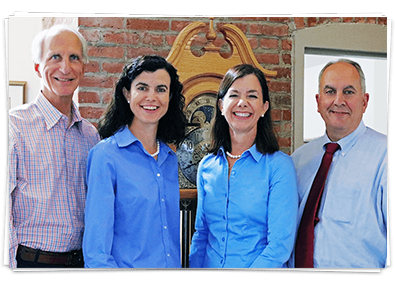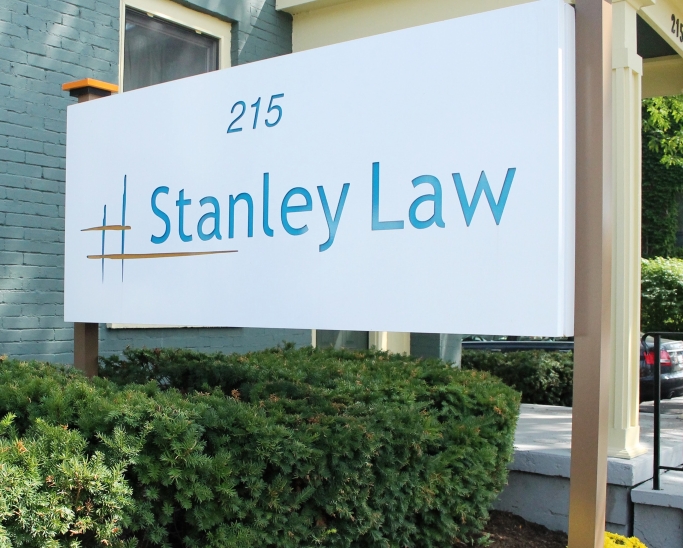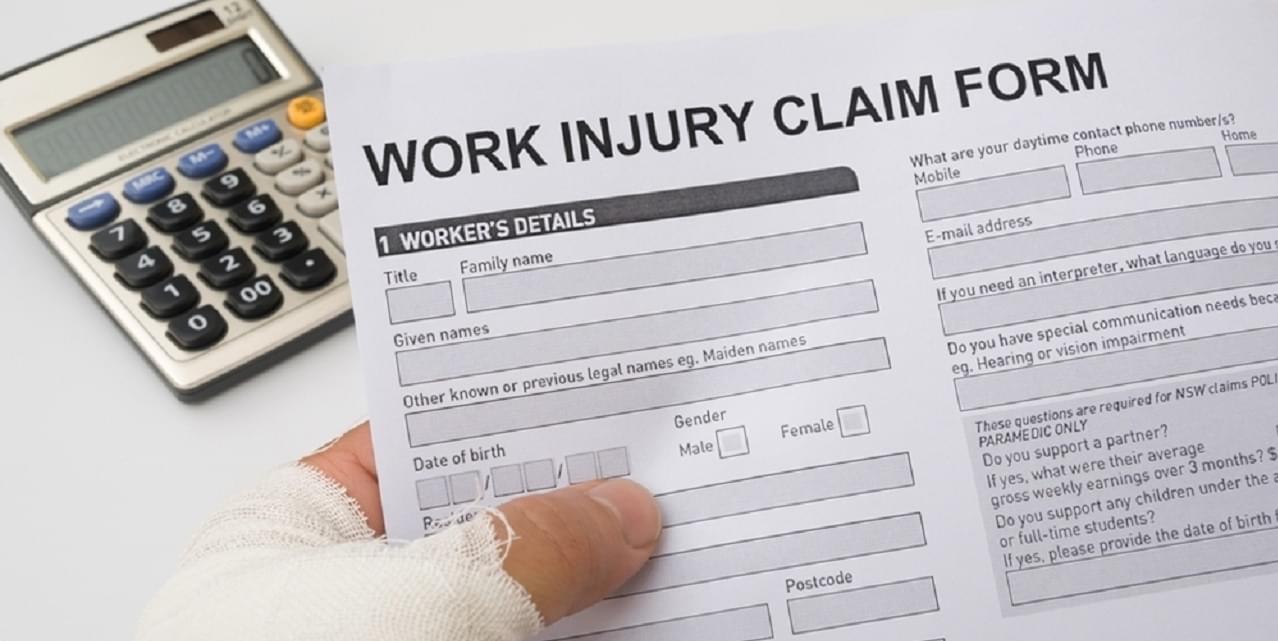SSD & Workers’ Comp Claims Webinar
Stanley Law: Dedicated SSD & WC Teams
There are few firms who have as dedicated of an SSD & Workers’ Comp team as the Team at Stanley Law. Recently some of the dedicated social security disability and workers’ compensation on the Team at Stanley Law, along with Joe Stanley, reviewed some of the most common questions, concerns and issues surrounding social security disability cases and workers’ compensation claims.
- What do you need to know about the social security disability claims process?
- What’s the difference between SSD and SSDI?
- What about your family?
SSD & Workers’ Comp
When it comes to workers’ compensation there are many details that matter as well. Timelines, just as with social security disability claims, are critically important to know and follow. Workers’ compensation attorney, Arthur Bigsby, shares the different types of workers’ compensation claims and what you need to know about each type. The most important takeaway from both attorneys and from personal injury attorney Joe Stanley, is never go it alone. Both social security disability and workers’ compensation processes are complicated. Unless you know what you’re doing, you’ll unjustly end up with nothing and your claim will be denied and dismissed.
1-800-608-3333
Info@StanleyLawOffices.com
TRANSCRIPT OF WEBINAR:
Welcome, everyone. We are streaming live today, I’m Angela Moonan here with Joe Stanley from the Stanley Law Offices, and we also have with us today our dedicated Social security disability attorney Shannon Doan. Also introducing Workers’ comp attorney Arthur Bigsby. So we’ll be talking today about social security disability, what is the process like, et cetera. Then we are going to be turning it over to Arthur to walk us through the different considerations for claims for workers’ comp.
Joe Stanley
As a brief introduction to what we do, everybody we represent, is hurt in some way or shape or form. And as personal injury lawyers, we are litigators and we bring claims to get compensation for people hurt in car accidents, work accidents, et cetera. And Social security disability and worker’s compensation are part of the process in which many of our clients are assisted in their injury. A lot of lawsuits that we get involved in involve injuries that arose out of and in the course of employment. And a lot of times the people are so injured that they have to file for Social security disability benefits. So it’s part of what we do. These seem like discreet things, but for many of our clients, they are involved in all three of the processes. One, the lawsuit to recover all their damages. And then as those lawsuits progress, they are also attempting to handle a workers’ compensation claim that may or may not be easy to navigate. And also at the same time filing for Social security disability benefits. So it seems complicated, and sometimes it might even be overwhelming for clients to understand that they’re operating in three different forums at the same time because of an injury they sustained that wasn’t their fault. So, this webinar is to give them some insight as to how these two processes are integrated, what we do and also how they go forward. So we’re gonna start with Shannon. She’s gonna tell you about Social Security Disability
Social Security Disability Attorney, Shannon Doan
Good Morning. First thing we’d like to talk about is what you can expect throughout the Social Security application process. The fear of the unknown can sometimes be overwhelming. So the more prepared you are for what to expect, the more seamless we hope we can make this process be for you. Um, the first and most important step in the social security process is filing your application. The options for filing your application. You can do it over the phone by calling the Social Security National Customer Service line. You can do it online, which allows for a quicker option for getting your application filed. The application is going to ask for some basic information, name, address, phone number, but it’s also going to ask for information that is far more specific to your disability claim, such as the illnesses or injuries that you are alleging cause you to be totally disabled, the date that you feel you became totally disabled and unable to work.
The Social Security Disability Application
The application is also going to ask you for information about your work history, your education level, and your treating sources. Once the application is completed, you then begin what is called the initial phase of the process. The Social Security Administration through the State Disability Determination Services will begin by gathering the medical evidence from the treating sources you’ve listed, um, on your application and provided to Social Security. Once the information is gathered, your case will be assigned to an analyst who will review your allegations as well as the medical information that Social Security has obtained. And then social security will make what is called an initial determination where they will grant your application, find you disabled, or they will deny your application, meaning that they are saying that you are not disabled. It typically takes anywhere from two to five or six months to get this initial decision back.
What Comes Next?
Once that decision is received, if it is unfavorable, the next step in the process is to file a request for reconsideration. At reconsideration. Steps are taken to get your medical evidence updated because as I mentioned, it sometimes can be months from the start of your case to the reconsideration level. So it’s important for Social Security to have as much up to date medical information as possible so that they’re evaluating your case based on the total picture. It typically takes another two to five or six months to get that reconsideration determination back. The options for the reconsideration level determination are again, favorable, meaning that they’re granting the claim for disability and finding you disabled or unfavorable, meaning they’re denying and saying still that you are not disabled. Um, unfortunately, it is not uncommon for both the initial and the reconsideration level determinations to be unfavorable. If that is the case, our next step is then to file a request for hearing filing. The Request for Hearing takes your case from the state agency level and gets it into the Office of Hearings operations so that you have the opportunity to present your case to an administrative law judge.
After Your Social Security Disability Hearing
After the hearing, the judge will issue a written decision In your case, the options for the written decision can be fully favorable, meaning the judge is finding you disabled as of the date that you said you became disabled. It can be a partially favorable decision, meaning the judge is finding that you’re disabled for a period of time that is not the full period that you’re alleging. The third option is that it can be an unfavorable decision, meaning the judge is again, denying disability in the case. If the judge’s decision happens to be a partially favorable or an unfavorable, the next step in the process is filing a request for review with the appeals counsel, which is essentially the appellate body within the Social Security Administration, The appeals counsel can remand a judge’s decision for one of three reasons. They can find that the judge abused his or her discretion. They can find that the judge’s decision contained an error of law, or that they can find that the judge’s decision was not supported by substantial evidence. The appeals counsel has to find only one of those reasons in order to remand the judge’s decision back for a second hearing.
The Appeals Council & Securing A Social Security Disability Attorney
If the Appeals Council does not find one of those three reasons for sending the decision back to the judge, the next line of action in a social security claim is to file an appeal with the United States District Court taking the case to federal court. That is a, a general overview of, of what the application process looks like from the very first step of filing the application to having to go all the way through federal court. The sooner you secure an experienced social security disability attorney, the better. And I say that because these steps, every step has a very strict timeline by which appeals must be filed. Typically, a request for reconsideration or hearing must be filed within 60 days. If you, if we are a day late getting that appeal filed, the claim can essentially die there and you have to start all over again, which unnecessarily delays the process. There are also some very important things that, that having an attorney earlier on in the process can do. We can ensure that as records are requested that they’re being received, because again, it’s important to give social security the complete picture of your, of your medical status. And sometimes it can be very difficult to get those records from medical offices in a timely manner. So the earlier in the process you can get representation, the more complete the picture’s going to be for social security.
So should there even be, if you are getting ready to file a claim for the very first time, let’s say you have not been denied, you’ve not even really gotten into the pipeline, if you will, um, and you’re looking at the application, you’re, I mean, is there, is that a time to call you as well, Shannon? I mean, will you walk them through that application process or how, or do they have to wait to be denied before they call an attorney?
Call Us Right Away For Guidance in the Social Security Disability Process
You do not have to wait to be denied the first time to give us a call. If filing an application for social security is something that you’re considering, we encourage you to reach out to us. We can talk to you about the particular issues in your case, what we see as the strengths, what we see as the weaknesses, and walk you through the application process again to make sure that, that we’re getting social security, all of the information that is critical to, to getting the best result possible for
Different Disability Benefits For Adults
I think the next important topic to talk about would be what are the differences between some of the types of disability benefits as an adult? There are two different types of disability benefits to which you could be entitled. They’re called disability insurance benefits and supplemental security income benefits. Medically, they’re evaluated under the same standard of disability by Social Security, but there are some very key differences in terms of who is eligible for these different types of benefits. The first, and I would say the the biggest difference between the two types of benefits is one is an entitlement based benefit. The other one is a needs or means tested benefits. What does that mean? Disability insurance benefits are an entitlement benefit that are based upon your work history. All of those FI taxes that we see deducted from our paychecks over the years are paid in to the social security system and contribute to our insured status.
So in order to be eligible for disability insurance benefits, you typically have to have worked a significant part of your life. Um, quarters of coverage are based on the amount of earnings that we have, and typically you have to have 40 quarters of coverage to be insured. 10 of those need to come in the 20 quarters immediately before you filed. Again, this is another one of those areas where it is helpful to have an attorney earlier on in the process to look at the earnings history and to break this down to see how the quarters of coverage might affect your case. The second type of adult dis disability benefit are SSI or supplemental security income payments. As I mentioned earlier, they’re based on the same medical standard of disability, but SSI benefits are subject to very strict income and resource limitations. If you’re over the income and resource limitations, unfortunately you will not be eligible for SSI benefits regardless of how strong the medical evidence may be in your case.
The Next Difference Between SSD and SSDI
The second difference, and I kind of touched on it earlier, is the insured status concept. You must be insured in order to be eligible for disability insurance benefits. Again, you must have worked for the required period of time to get the, the quarters of coverage to be insured. Whereas for SSI benefits, there is no insured status. Another distinct difference between the two types of adult dis disability benefits is the waiting period. Uh, with disability insurance benefits, there is a five month waiting period from the date you are found disabled until your monthly benefits will begin to be paid. Whereas with ssi, since it is a needs based or means tested program, there is no such waiting period. You can begin receiving benefits immediately when you’re found disabled. Another key difference between the two types of benefits is retroactivity of benefits.
How much potential back pay can you receive on the claim with disability insurance benefits?
And again, those are the benefits that are based on your work record. You can receive up to 12 months of past due benefits on your claim. So essentially, if you are alleging disability 17 months back before you filed your application, you could receive the full 12 months of back due benefits. Whereas with SSI payments, since it is a a needs based or means tested program, there are no retroactivity of benefits. You cannot be paid for benefits prior to your application being filed. Another key distinction between the two types of benefits programs are what types of benefits could your, your family members potentially receive? Social Security calls those dependent or auxiliary benefits with disability insurance benefits, those benefits that are based on your work record. It is possible that your spouse or your children could also be entitled to monthly benefits based on your finding of disability. Whereas with SSI benefits, the needs based type of Social security disability payments dependent or auxiliary benefits are not possible. Meaning that your spouse or your children would not be entitled to monthly payments even if you were found disabled.
Social Security Disability For Veterans – The Process
The social security application process is the same for veterans versus civilians. Um, we do get often get questions of, I have a 100% disability rating through the va. That is helpful in the social security application process. The standards of disability are different, but we can use that 100% disability rating in a way that hopefully will be advantageous to the claim. First and foremost, a veteran, if you have a 100% disability rating, we can ask Social Security to designate the case as critical, meaning it is expedited rather than being processed in a first, in first out basis. That case can get priority processing. So hopefully we can minimize the wait time for our veterans. Second, the, the 100% VA disability rating does not guarantee a fully favorable social security decision because the standards of disability are different. But it is certainly an argument that we can make supporting a finding of disability. In your case, I’m not hearing you, Angela, you’re muted.
How Do Attorneys Get Compensated In Social Security Disability Cases?
We only are paid if we achieve a favorable outcome in your case and the case results in back due benefits. So simply put, we only get paid if we win the case for you, which is often an a very important consideration people have when, when deciding whether or not to, to retain an attorney. We only are paid if we win the case for you. The fee is regulated by the Social Security Administration. We only get paid if we win, but the fee is it’s limited and it’s a specific amount. So differs from personal injury cases. It is not a percentage of the recovery per se. It’s a limited amount fixed by the Social Security Administration and they have to approve it so much like workers’ compensation, which we are paid in the same way.
If you have any questions or need guidance of any kind regarding your benefits or the process, contact Shannon at
SDoan@stanleylawoffices.com or the general email for Stanley Law is info@stanleylawoffices.com. And that goes for any legal question that you may have.
Workers’ Compensation Claims with Attorney, Arthur Bigsby
Arthur is here representing the workers’ compensation team, which includes Megan Fallon, Sheila Fallon, Rob Geier, and Arthur Bigsby. The attorneys also have several dedicated paralegals that work with them.
The workers’ compensation system is run by the New York State Workers’ Compensation Board, and their slogan is get better, Get Back to work. And that’s what workers’ compensation cases are all about. There are several different types of claims. All of the claims require that your injury or your condition or illness be related or connected to your employment. As Joe alluded to earlier in the presentation, your condition has to arise out of and in the course of your employment. So specifically, some claims are considered to be accidents. An accident is an injury traumatic, that arises out of it in the course of your employment. So it’s gotta be about what you do at work and that you’re doing whatever it is you did at work. It can’t be off work hours, off the work premises or some other issue. The case law is very broad.
The Workplace
The workplace, of course, gets expanded more and more every year as more clever attorneys. They give different ways to associate different locations to the workplace, but basically it’s gotta be something that arises out of, and in the course of employment at your job site while you’re employed, an occupational disease is a little bit different. That’s an illness or a condition associated with a particular occupation or industry. Two examples of that would be exposure cases like asbestosis, where you’re exposed to an element that causes you to develop an illness or a condition or carpal tunnel syndrome where you have a repetitive, uh, use or an overuse of a body part and you, and you be, you develop a condition like carpal tunnel syndrome. Osteoarthritis is another example where someone works, uh, repetitively and aggressively and physically say in the construction business, and they develop osteoarthritis in their knee or their hip.
Also within the realm of occupational disease, you have hearing loss, hearing loss has some unique features, very specific, uh, lost parameters. You’ve gotta go to a hearing specialist who understands the worker’s compensation criteria, and they fill out your, your chart showing where your hearing loss in the spectrum of, to your total hearing capabilities exists. And they have to tie that, of course, to an exposure at work. There are also death claims. Death claims arise. Of course, if you have an existing claim and a person dies as a result of the illness, that is the basis for the claim. Or it could be a new accident or disease which results in your, uh, immediate or subsequent death. The filing of the claim is extremely specific. In order to file an accident claim, there’s gotta be a 30 a notice within 30 days of the accident given to your employer in writing or verbally.
If you don’t do that, that can nullify your claim unless you can show good faith or a lack of prejudice to the employer’s investigation it cause and, and then they could extend the work and extend you past to 30 days. It’s a little bit different when you have an OD NCR claim or an occupational disease. In those cases, you have two years to give notice and bring your claim. So it’s a little difference there. In a hearing case, it’s a little bit different. You’ve got three months from when you’ve been removed from the condition that led to the hearing loss. So that three months can start if you move your workspace away from the condition that is causing the hearing loss three months from when you’re given hearing protection or three months from when you leave the job altogether. So there’s, there’s different time frames and they’re very, very particular to the type of claim that you have. If you go back to the accident claim, once you’ve given notice to your employer, you’ve gotta file your c3, which is your claim form, which I should have put on the slide. This is a C3 claim form. You can fill it out yourself, electronically. You can mail it to the board, you can bring it to a board location, or you can do it with the help of an attorney that mails it out for you.
Getting Legal Help Is Important
If you’ve been involved in a worker’s compensation accident that might involve a third party case, meaning a lawsuit, then it is imperative that you get legal help before you file your c3, because even the slightest misstatement in these forms can come back to haunt you. So, um, I know as a, as a matter of, of of experience that people, if you let someone else fill it out for you, like your employer or you, someone fills it out, who doesn’t really know what they’re filling out, uh, it you can get yourself in serious trouble.
First of all, you may love your employer. You may have worked there a really long time and you might really like the human resource people at it at your job. They’re not your friends when you’re hurt.
So yes, you should seek legal advice as, as, as soon as you are injured. However, if you don’t, you’re not precluded from finding or obtaining legal advice anywhere in the process, but generally speaking, the sooner, the better for a lot of reasons. And that brings me right to proving the claim. You prove your claim with strong advocacy. The employer and their insurance company do not want to pay you money or pay the benefits. They just don’t wanna do it. Simple. Matter of fact. Now what, what do you need to do? You need to have either a real understanding of this yourself, a really fair human resource person at, at the employer or an attorney that knows the business as importantly, or more importantly, you need to have medical providers that are familiar with workers’ compensation concepts and rules. You find quite often that the treating physician may be a brilliant physician, but he’s no match for the expert team that the employer’s insurance company hires.
Independent Medical Examiner (IME)
The employer’s insurance company is going to bring in an independent medical examiner after you’ve met the initial threshold of having prima prima faci medical evidence presented to the board. These people live and breathe workers’ compensation rules. They know how to interview you. They know how to examine you. They know to how to, they know how to write a report to downplays your injuries. Your medical providers and their team need to be able to take an excellent history. You need to be able to present your, uh, diagnosis properly. And they need to know how to treat within the guidelines of the Worker’s Compensation Board, or more importantly, how to ask for a variance from those guidelines if it is medically necessary.
Have A Doctor Who Understands Workers’ Compensation
Some conditions start with a diagnosis by a general practitioner. Some, some con some injuries start right at the hospital because there’s been a tr traumatic accident. You’re in a hospital, a a trauma doctor sees you, you’re referred out to, um, uh, a practice that handles this injury and they are either in the workers’ comp system or they’re not. They won’t take you if they’re not. So the best thing to do if you’re going through your general practitioner is to simply ask, do you do worker’s compensation work? They’ll tell you yes or no. Many, many reject worker’s compensation, many don’t. Those that accept it ought to know how to do it. And if they don’t, it’ll be very evident very quickly. Your general practitioner of course, then refers you out to specialists as is necessary, and they will generally only refer you to someone that is competent in the field.
If you misfire on presenting your history to your doctor, that makes the establishment of your claim a real uphill battle. If you give a good, honest history that is competently presented by your doctor in the medical reports, it makes proving the claim E easier is probably a bad word. Um,
So, if you have a doctor that presents the case properly and it, and then the independent medical examiner has a more difficult time overcoming the presentation and, and poking holes in it and either showing that it’s not causely related to work, or that it’s not as debilitating as you and your medical team feel that it may be. So a competent, experienced worker’s compensation, uh, medical team is essential to getting your claim, uh, proven. So the steps to proving a claim you need, you need to have that initial report that simply states that you are exhibiting symptoms of an injury or an illness or a condition calls, a relationship comes later. Uh, once you, once your, your prima prima faia medical evidence is presented, the insurance company has an independent medical examiner come in and do an exam. That exam is not independent. It’s a misnomer. Good history given to that doctor is very important. And that history should match the history you gave to your doctor. Otherwise, that creates all kinds of confusion. The independent medical examiner will then look at past medical reports, consider the history you’ve given them. They will then make a diagnosis. They will form an opinion and stated on causal relationship to work. They will then state a, a, uh, medically necessary treatment course. They’ll determine a level of, uh, impairment. And then you move on to your next, your next step is to go to a hearing where the judge considers whether or not your doctor and the IME match. If they do, your case is established.
Did it occur at work? Is it really an injury or is it really a causely related condition? What’s the level of impairment? Level of impairment is what determines how much money you’re paid for your wage loss supplement. What’s medically necessary treatment? All these issues are in play. That’s why you need to have an attorney at your hearings. In order to prove that cause a relationship of a claim, it cannot be speculative on your doctor’s part. There’s gotta be a rational basis for his determination. Doctors can’t just say, Well, it’s plausible. This happened at work because you’ve got arthritis in your knees and your hip. There’s gotta be some connection between the diagnosis, your job duties, and the conclusion that it’s causely related. For instance, you’re a physical construction worker. You’re jumping on and off machinery, you’re lifting heavy loads, you’re doing a real physical job, and you have osteoarthritis where doctors gotta establish his opinion and the mechanism of the injury, the wear and the tear from the job caused the onset or the progression of the osteoarthritis. And that has become debilitating in this particular person. So even though he worked through it for eight or nine years, and the 10th, 11th, and 12th year became severe, and I’m pulling him out of work today, he’s a hundred percent impaired and can’t go back. He’s got an occupational disease that started then not eight years ago when he had his first symptom of osteoarthritis. That goes back to when you file your claims, You file your OD NCR claims within two years of when you were disabled or when you knew or should have known you had the disease and your doctor helps you.
There more reasons why your doctor’s gotta be experienced in this. What are the benefits of worker’s comp? Well, if you go it alone with private insurance, you’ve got deductibles. No one pays you when you’re out of work. When you run outta sick time. Worker’s comp does both. They give you a wage, uh, a lost wage replacement. Two-thirds of your average weekly wage for the year prior to your injury is your total rate. That rate is then reduced by your percentage of temporary impairment. If you made a thousand dollars a week on average, your total rate would be $666. If you’re 50% impaired, you get $333 per week. It’s pretty simple math. If you are working at a job that pays less because of your injury, you can’t do that physical work. So they put you in the office and you become an administrative person at less pay.
Workers’ comp will pay two-thirds of the pay reduction, which makes sense. You get a paycheck that’s smaller, you get two-thirds of that difference. The reason it’s always two-thirds is it’s not taxable income. Worker’s compensation also has medical benefits. So you don’t put your medical care on your private insurance, You go through the worker’s compensation carrier and if your car, if your treatment is causely related and medically necessary, words that are easily said, but difficult to prove if you have an opposing independent medical examiner, but cause related medically necessary care is paid for with no deductibles, uh, by your insurance, the insurance carrier for your employer, they also include consequential injuries. An example of a consequential injury is if you’ve injured your knee and you start to limp and then your unaffected knee becomes problematic as a result, it’s a consequence of the re of the related injury that can be covered. Some more things happen to your hip and your back possibly if you have a limb. So consequential injuries, once proven are covered.
Workers’ Compensation Team Working With The Dedicated Personal Injury Team
We work with the PI people all the time because you can be injured at work, but the injury is caused by a third party that is not an employee or someone with a business re I’m sorry, someone who’s not an employee or by equipment or conditions that are not owned by the employer. So there are third parties, and it’s called a third party claim. There are offsets between the two, but we work together. Oftentimes the worker’s comp case moves at a quicker pace and we can provide some evidence and some medical reports that assist in the commencement and the prosecution of the personal injury case.
It’s important to go for a doctor who’s a strong advocate, who’s familiar with workers’ compensation. You find doctors that are good practitioners that just don’t get it, and they don’t wanna follow the rules. And they think that the Worker’s Compensation Board is trying to tell them how to practice medicine, and they take it as a personal affront. It’s the system, it’s the state’s system. You gotta follow the state’s rules. There are medical treatment guidelines for every condition, and some doctors don’t like them. They do have a little bit of a back door. You’re allowed to request a variance, but it requires rigorous proof that your preferred treatment as a doctor is better than that recommended in the medical treatment guidelines. If you do it and you win, that’s great, but it’s very difficult to do it. So a doctor that is always battling the system, you don’t do well with those doctors.
The Work of A Workers’ Compensation Attorney
Any job you’ve gotta like who you’re working with, which I do, you’ve gotta feel properly compensated, which I do. But most importantly, you’ve gotta feel you’re making a difference for someone. And these people come in, they’ve worked some, most of them for a really long time, and they were injured. Keep in mind, fault is not an issue here. Okay? So they were hurt just doing their job. They didn’t do their job improperly necessarily. They were hurt working hard for someone. And now they’re first day they’re here and they’re told, and you’ll get two-thirds of your average weekly wage. Two-thirds, What are you talking about, why am I being cut? And then as you heal what you wanna heal, your pay goes down, but you’re not back at your job that’s hard to swallow. So you are really helping people that are in distress, physically, financially. And then that ends up probably becoming emotional when you can’t provide for your family the way you used to. And you have bill collectors or your landlord or someone chasing you for money, That’s who you’re helping. And it’s very rewarding.
A Dedicated Social Security Disability Attorney, Shannon Doan
Why do I do what I do everyday? Because it makes a difference, plain and simple. What motivated me to, to start my social security work was a personal experience. After my dad had a massive stroke two days before my high school graduation. He did not receive a social security favorable decision until my third year of law school. I, I witnessed personally the struggles that my parents had making ends meet to support myself and to my and my brother, my younger brother. That experience will never go away. I’ll never forget that. And hopefully we can help someone else not have to wait all of those years to get the favorable decision that they’re entitled to, to get. It’s, it’s rewarding. As, as art said, you’re, you’re helping make a difference in people’s day-to-day lives. And that’s the most rewarding job you can have.
From Joe Stanley About the Team at Stanley Law
Well, you know, we’re lucky to have people as dedicated and understanding, because I know how difficult and how stressful it is for the lawyers to handle the day to day ups and downs of, of a client’s workers’ compensation in particular. It’s a very, very emotional, you know, it’s, it’s in the trenches work because it’s these people’s lifeline. One day they’re working and they have a, you know, a happy life, so to speak. And the next day everything has been turned on its head. And believe me, people under those scenario are not the best people to have to deal with. Just for them to understand why this has happened to them. And I give them all the credit in the world for guiding understanding and being as patient as saints, because that’s what the work requires.
1-800-608-3333
Info@StanleyLawOffices.com
Stanley Law has offices in Syracuse, Watertown, Binghamton, Rochester, Montrose, Pennsylvania, and you’ve probably heard and seen on some of our social media. We have a new office located in Oneonta. So not only will we do free consultations, but we do them, via Zoom, online. If that’s easiest for you, we certainly will do a consultation over the phone. While we can meet you in those respective offices, we also, if necessary, can come to you. So thank you both to Shannon and to Arthur. Joe, thank you again and please visit us on those social media platforms and we’ll be back again, hopefully next month. I’m Angela Moonan and may everyone enjoy the rest of your fall and we’ll see you again soon.














